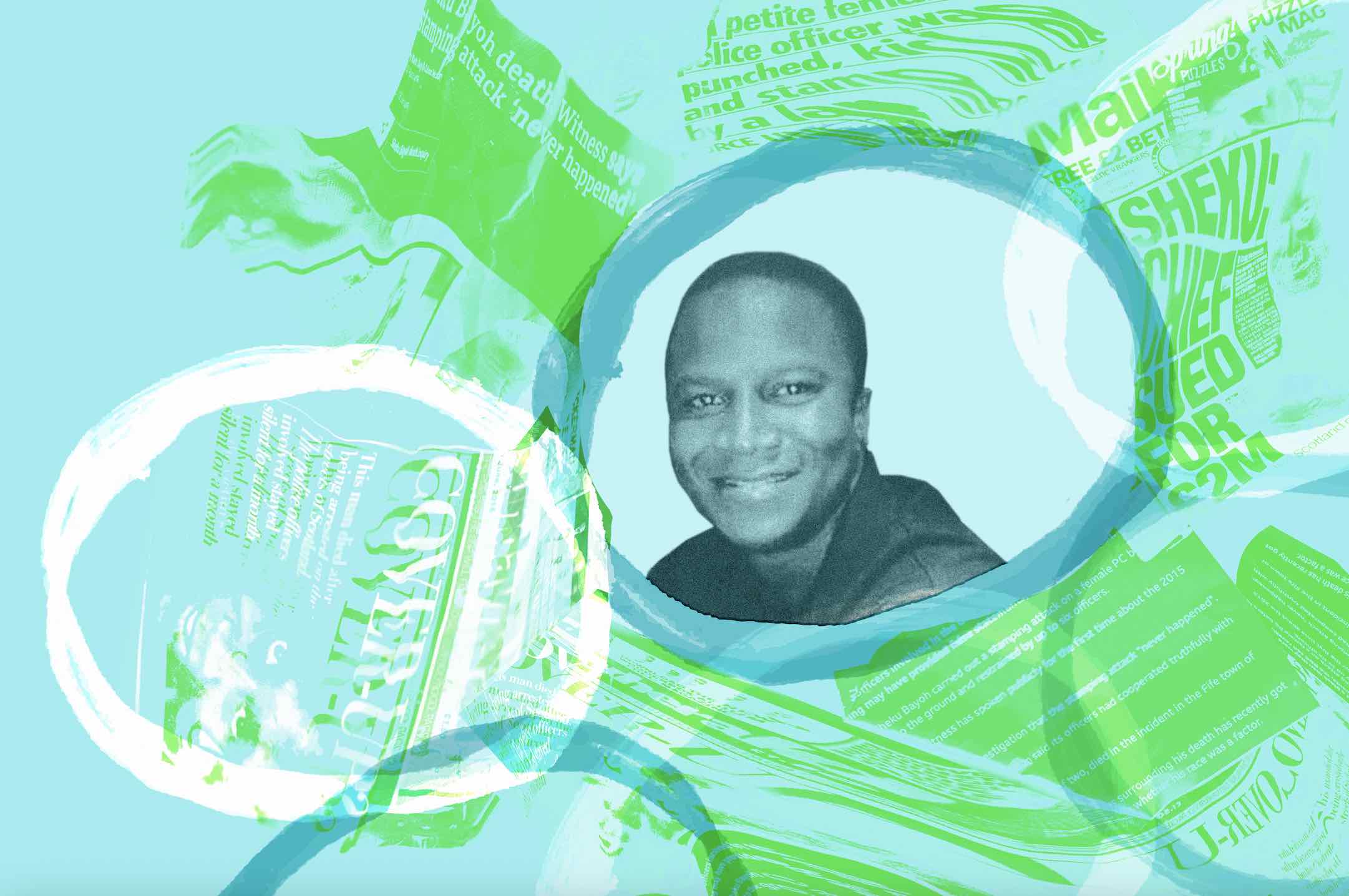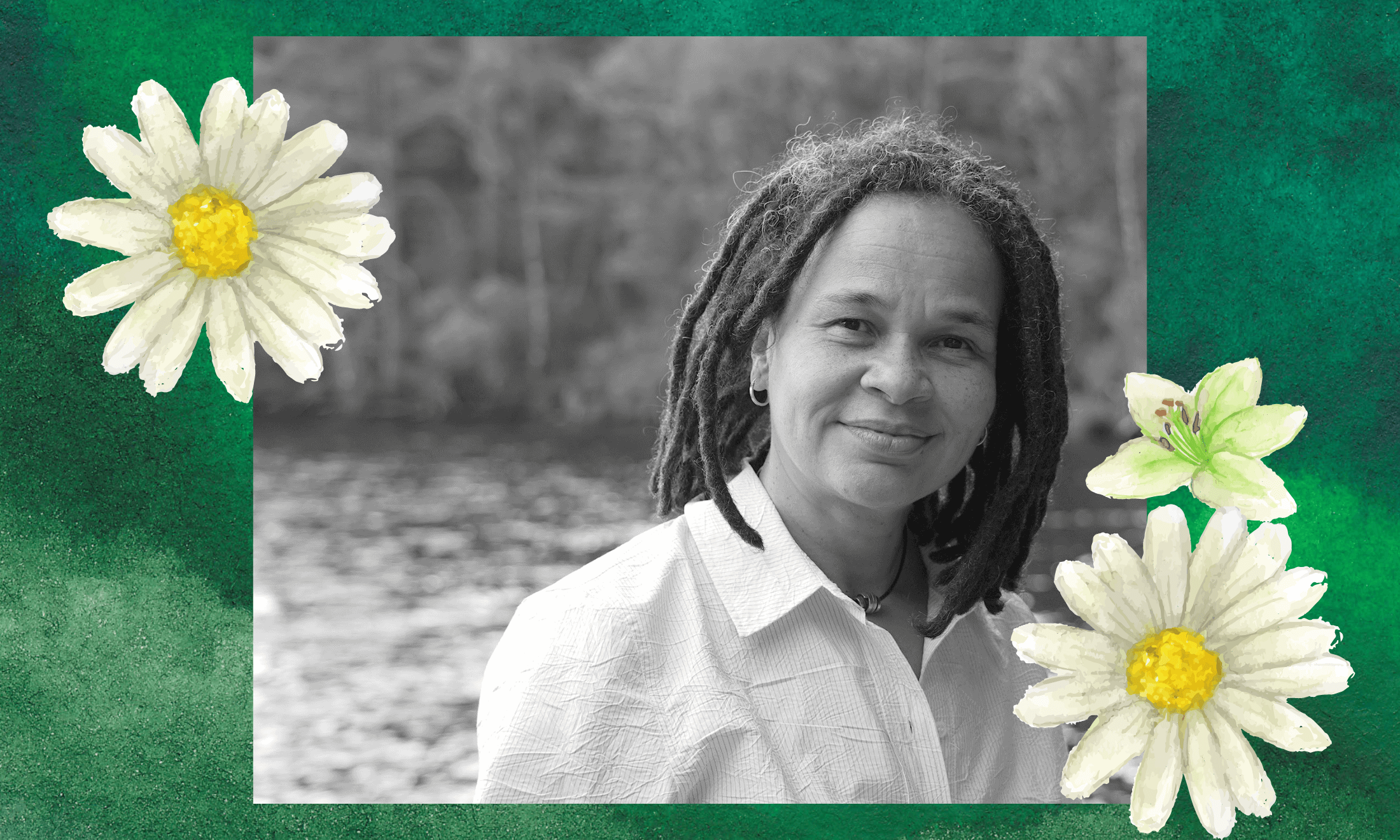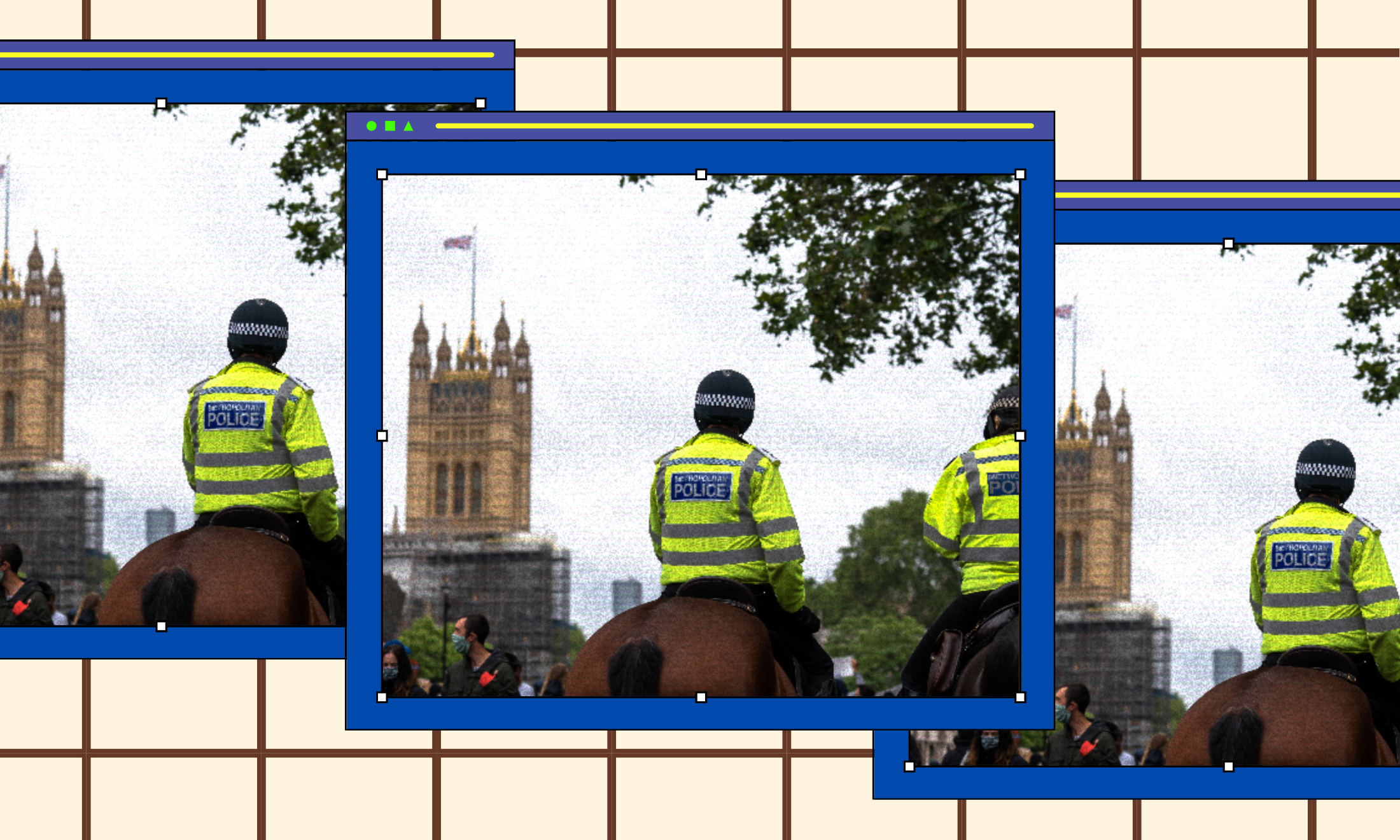
Illustration by Naomi Gennery
How police corruption and press collusion shaped the death of Sheku Bayoh
A black man who died in police custody in Scotland during a violent incident in 2015, his case is currently undergoing a public inquiry that has shed light on institutional racism.
Courtney Stoddart
03 May 2021
Content warning: mentions of death, institutional racism
On the morning of 3 May 2015, a black man named Sheku Bayoh died after being restrained by up to six officers from Police Scotland on a residential street in the Scottish town of Kirkcaldy. Six years have passed and though there has been a great deal of conjecture surrounding the events, it has become clear that the police and press colluded in order to frame Sheku as being deserving of the violence inflicted upon him.
When a black person dies in police custody, the police and press typically invoke racist tropes to justify the actions of the institution; a despicable misuse of their power. But, the Black Lives Matter protests which took place across Scotland in 2020 have further highlighted Sheku’s case and the contradictions presented by them.
The country has long thought of itself as being a colour-blind utopia, sitting alongside a wilful ignorance of the part Scots have played within empire and imperialism. The myth of ‘Scottish exceptionalism’ is regularly perpetuated – at its root proposing that because a majority of the population tends to vote left-wing it is, therefore, more tolerant toward people of different backgrounds. Data on this subject, however, suggests otherwise. Sheku’s death has acted as an uncomfortable mirror, forcing some of those who have defended the myths surrounding Scotland’s racism to question if this image is accurate for the first time.
“Sheku’s death has acted as an uncomfortable mirror”
As a person who is racialised as black and has grown up in Scotland, Sheku’s death was shocking but not surprising to me. Though sometimes it lurks beneath the surface in covert ways, the racism of this country has always been obvious. It is, as articulated by Anoushay Okhai writing for The Meridian, “subtle, and therefore defensible by design. It’s easy to perpetuate and immensely difficult to call out”.
The realities of Sheku’s death are this: after being spotted walking down the street erratically with a knife (which he had discarded by the time police got to the scene), he was apprehended and within 46 seconds held face down on the ground by officers. CS spray, batons, leg restraints and handcuffs were used. The post-mortem revealed extensive injuries. Officers involved refused to give statements to the Police Investigations and Review Commission until 11 days after the incident. The Scottish Police Federation claimed that a “petite female officer”, PC Nicole Short, was subject to a “violent and unprovoked attack” by Sheku. This has been refuted by both CCTV evidence and eyewitness testimony.
In November 2020, a public inquiry was launched to investigate whether race was a factor in Sheku’s death, but I have been trying to uncover the extent of racism in the press and police response since 2019. My findings have been stark, primarily because of the blatant and clumsy way the police and press essentially worked together to depict Sheku as the archetypal ‘angry’, ‘thuggish’ black man. This particular trope has plagued conceptualisations of black masculinity for centuries, which to me, demonstrates how the legacy of stereotypes that arose during the Transatlantic slave trade still bear significance today.
There are striking comparisons to be made with the cases of Mark Duggan and Joy Gardner (to name but a few), where the police fed information to the press, who then continually reproduced these narratives in order to frame the victims as deserving of violence – suggesting this is a formulaic response to black deaths not isolated to Sheku’s case. It is incredibly disturbing to recognise that the deaths of so many black individuals are related to their ethnicity and that the police, who are meant to serve and protect the public, were not only involved in their deaths but have tried to cover up their wrong-doing.
“One of the officers involved in the case has been described by his own family as having racist views”
Throughout the statements of police involved in the death of Sheku, they made reference to his size, with one officer claiming he was “the biggest male I have ever seen” as well as referring to his “bulging muscles”. Sheku was 5’10, weighed 12 stone 10 pounds, and wasn’t even the largest man in the vicinity. Two officers present were 6’4 and 6’1, holding a combined weight of 43 stone. Several officers mentioned that they thought Sheku was a terrorist because of the Lee Rigby attack two years prior, which saw a British army soldier murdered by two men of Nigerian descent. It raises the question of why police officers thought a terror attack would occur on quiet Kirkcaldy street? And why they would associate a black man with terrorism when they had no reason to believe the incident was terror-related?
Alongside this, one of the officers involved in the case has been described by his own family as having racist views. Another prominent claim among the officers was that Sheku was resistant to the CS spray – this has been refuted by an eyewitness, who states that Sheku reacted to the sprays. This plays into stereotypes of black people as having higher pain thresholds in comparison with other demographics. Data shows that when receiving medical care, black people are less likely to be prescribed pain medication than their white counterparts, a fact I find reprehensible but have also experienced first hand.
In June 2015, shortly after the police statements were released, the press began to give coverage that appeared to deliberately show Sheku in a negative light. The allegations which followed were extreme: they claimed he was a domestic abuser, had anger problems in his relationships, was a drug user and made false claims that he was involved in genocide in his native Sierra Leone. The press were intent on highlighting the alleged attack on PC Short with several articles stating that Sheku threw her “26ft”. The police and press claimed officers were heavy-handed during the incident because of the ‘attack’ on PC Short. This narrative plays into salient storylines about the threat black men pose to white women. In reality, those who knew him say Sheku was kind and caring.
Sheku’s death has signified that racism is endemic within Scotland’s institutions. It underlines the power of the ‘official’ narrative and how the state can mystify its own abuse of power in order to quell dissent. The officers in Sheku’s case have been allowed to retire on medical grounds while it has taken five years of campaigning by the family and lawyer Aamer Anwar to provoke a public inquiry. To add insult to injury, both the family and Aamer have been subjected to smear campaigns, again signifying the conspiratorial efforts and lengths police will go to in order to exonerate officers and protect the image of the institution.
The state has a long history of protecting the police no matter how heinous their crimes. Only time will tell if true accountability for Sheku’s death will be achieved.

Britain’s policing was built on racism. Abolition is unavoidable

How Pakistan’s Khwaja Sira and transgender communities are fearing and fighting for their futures

Their anti-rape performance went viral globally. Now what?






